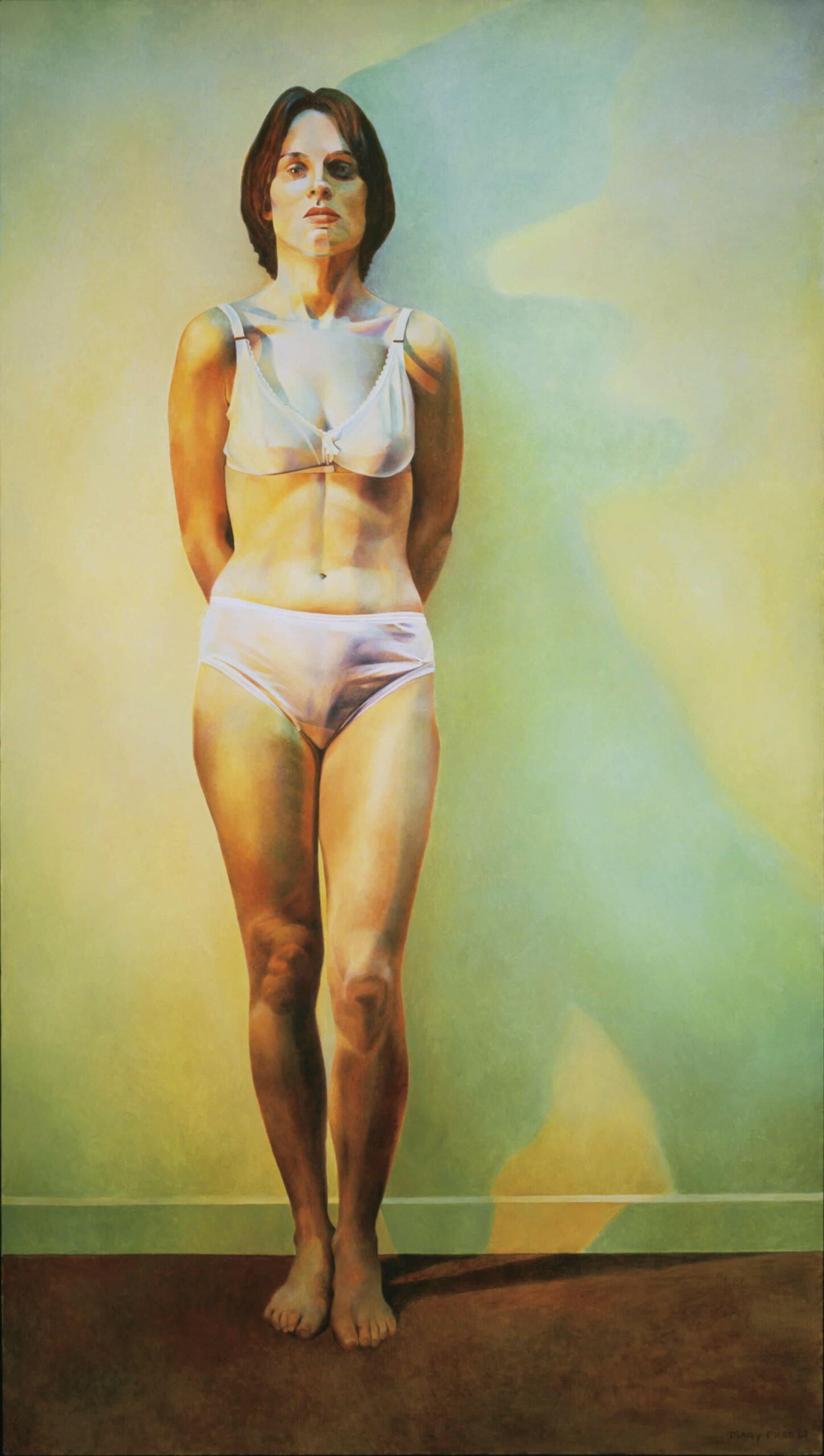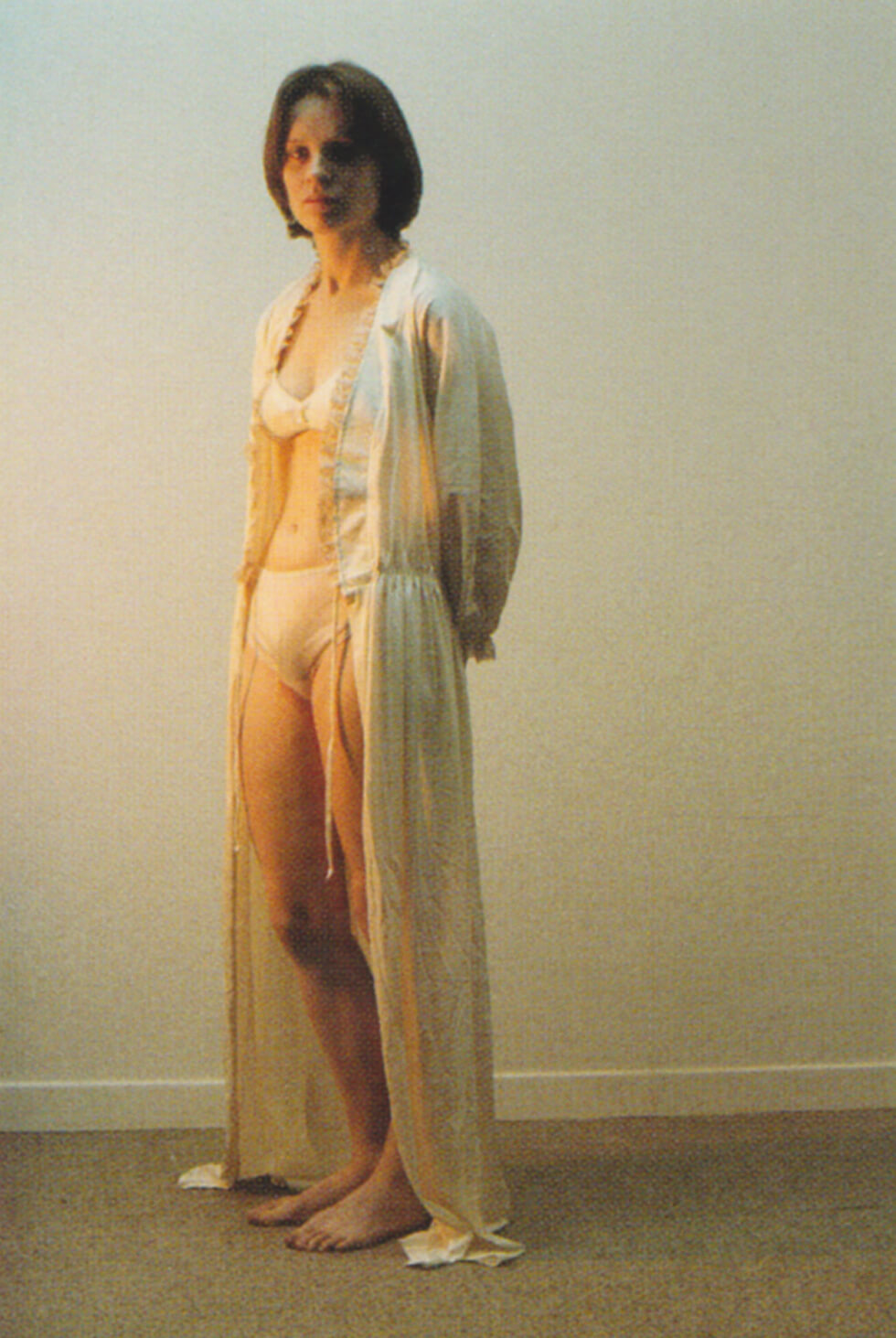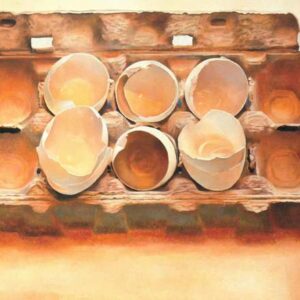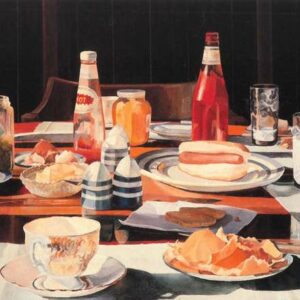This Is Donna 1987

Mary Pratt, This Is Donna, 1987
Oil on canvas, 185.4 x 106.7 cm
Beaverbrook Art Gallery, Fredericton
In 1996 Mary Pratt remembered meeting Donna Meaney in 1969 as “almost one of the most major days of my life.” Pratt first saw her at a dance at the local high school, Our Lady of Mount Carmel. She had been asked to choose the Valentine Queen and one student, Meaney, “stood out like a light,” Pratt wrote. “Her pleasure in dancing filled her body, and her eyes, though deep-set, crinkled in smiling intimacy with the beat. She was the obvious choice.”
Meaney came to the Pratts’ to help with the housework and children. She ended up living with them for three years from the time she was seventeen. She modelled for Christopher, and for Mary as well. The first of Mary Pratt’s Donna paintings was made from slides taken by Christopher, part of a tray of slides he had given to Mary because he wasn’t going to work from them. Eventually Mary started taking the photographs herself.


Mary’s first Donna painting, Girl in Wicker Chair, was completed almost ten years after the source slide was taken. “When I painted it,” Pratt said, “I was aware that [Donna] was looking at Christopher, not me.” Donna had become Christopher’s mistress at some point in her modelling relationship with him, and Mary, though aware of it, did not challenge either of them. Instead, she painted. Carol Bishop-Gwyn proposes that Mary may have been trying to “paint the object of her husband’s desire better than her husband could.”
Pratt has said of these paintings that she was trying to understand what men found erotic in representations of women. Tom Smart writes, “Using what she saw as Donna’s strong sexual presence, Pratt wanted to explore the concept of female sexuality as an erotic muse to men, and she particularly wanted to understand her husband’s erotic muse.”
The image for This Is Donna came from a photo shoot Christopher did with Donna during her second stint of living with the Pratts. Donna had left their home when she was twenty, becoming involved with a man who ended up in prison, and who went back to his wife on his release. “She came back to us,” Mary said. “I think she was thinking of us as her parents. She was miserable.” Mary also noted that, in the photo, Donna had a “rumpled, sulky look that I hadn’t expected. Once again, she was looking at Christopher. This wasn’t the image I had intended, but I accepted it anyway.”
The power in This Is Donna stems in large part from that confusion of the gaze. As Pratt has stated, “Whatever happened between them is their business.” Nevertheless, the painting communicates much: a palpable tension, certainly. It is clear that the painter has a complicated relationship with her subject, though what that is specifically is left a mystery.

 About the Author
About the Author
 More Online Art Books
More Online Art Books
 Acknowledgements
Acknowledgements